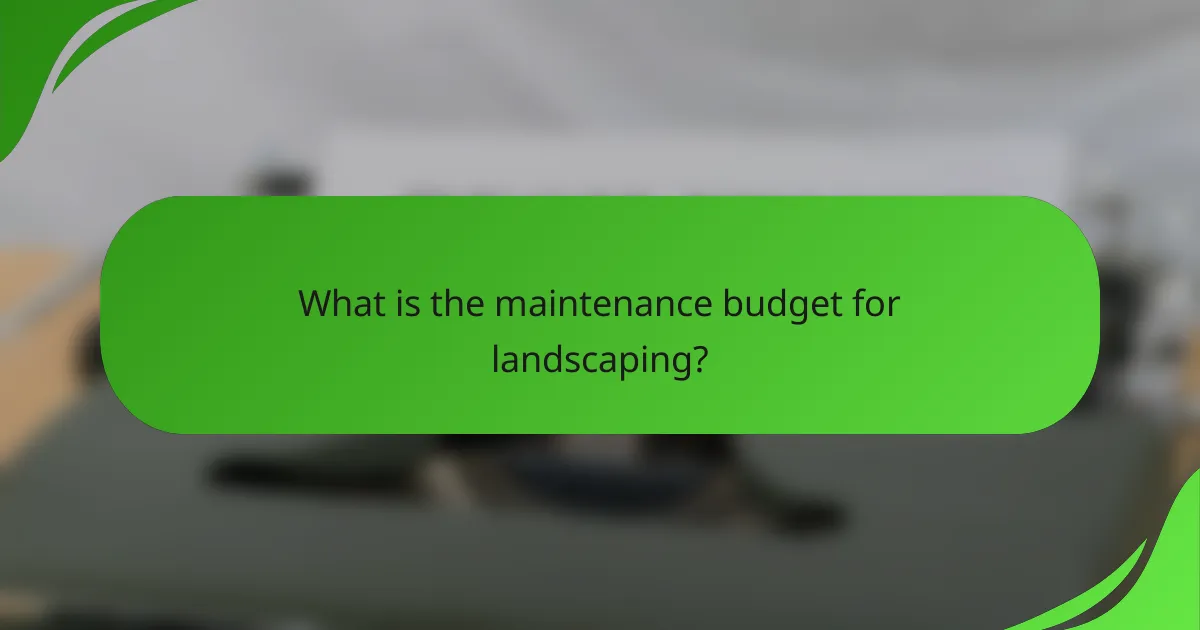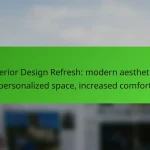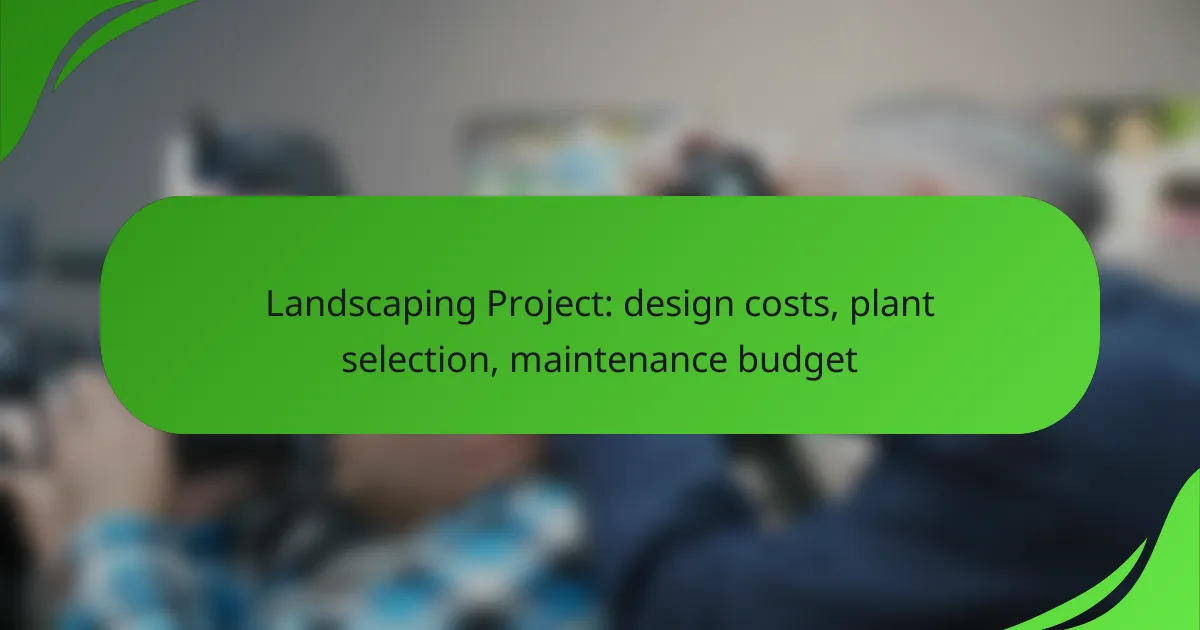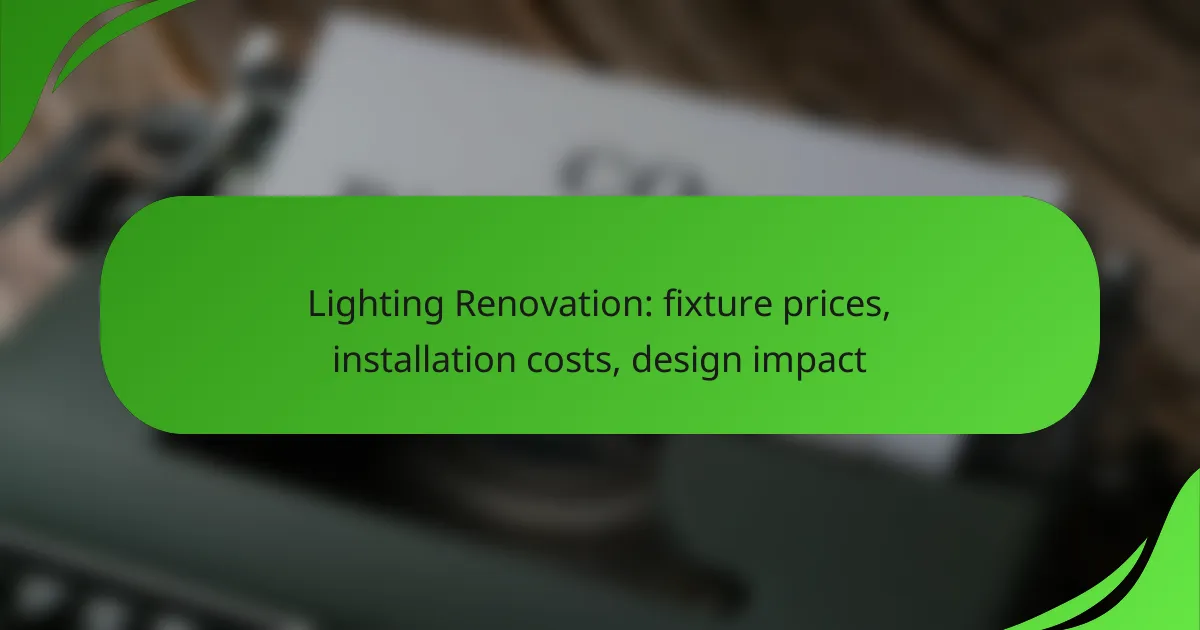Embarking on a landscaping project requires careful consideration of design costs, plant selection, and maintenance budgets. Understanding the financial implications of professional services and material choices is essential, as costs can range widely. Additionally, selecting plants that are well-suited to your local climate and soil will enhance the sustainability of your landscape. Finally, establishing a maintenance budget will ensure that your outdoor space remains vibrant and well-kept over time.

What are the landscaping design costs in urban areas?
Landscaping design costs in urban areas can vary significantly based on several factors, including the complexity of the design and the materials used. Typically, homeowners can expect to spend anywhere from a few hundred to several thousand dollars for professional landscaping services.
Average cost per square foot
The average cost for landscaping design in urban areas generally ranges from $5 to $15 per square foot. This price can fluctuate based on the specific requirements of the project, such as the type of plants selected and the intricacy of the layout.
For instance, a simple design with minimal plant selection may fall on the lower end of this range, while a more elaborate design featuring hardscaping elements could push costs higher. It’s essential to get multiple quotes to ensure a fair price.
Factors influencing design costs
Additionally, local labor rates and the availability of materials can impact pricing. Urban areas with higher living costs may see increased labor charges, while unique plant selections may come with premium prices.
Cost breakdown by project type
Here’s a brief overview of typical costs by project type:
- Basic garden design: $500 – $2,000
- Patio installation: $2,000 – $5,000
- Complete landscape overhaul: $5,000 – $15,000+
Understanding these categories can help homeowners budget effectively and prioritize their landscaping needs. Always consider getting a detailed estimate that outlines all expected costs before starting a project.

How to select the right plants for your landscaping project?
Selecting the right plants for your landscaping project involves considering climate, soil type, and maintenance needs. Focus on plants that thrive in your local environment to ensure a sustainable and visually appealing landscape.
Best plants for temperate climates
Native plants are ideal for sustainable landscaping as they require less water and maintenance compared to non-native species. They are adapted to local soil and climate conditions, making them more resilient to pests and diseases. Examples of native plants include black-eyed Susans, milkweed, and various types of ferns. Incorporating these plants can enhance biodiversity and provide habitats for local wildlife, contributing to a healthier ecosystem. When selecting plants, consider factors such as sunlight exposure, soil type, and water availability. Assess the specific conditions of your landscape to choose plants that will thrive in those environments. Also, think about the maintenance requirements of each plant. Some may need regular pruning or specific watering schedules, while others are more low-maintenance. Creating a checklist of your landscape’s conditions and your maintenance preferences can help streamline the selection process. The maintenance budget for landscaping encompasses the ongoing costs required to keep a landscape healthy and attractive. This budget typically includes expenses for labor, materials, and equipment necessary for regular upkeep. Annual maintenance costs for landscaping can vary widely based on the size and complexity of the landscape. On average, homeowners might spend between 5% to 10% of the initial landscaping installation cost each year on maintenance. For example, if the landscaping project cost $10,000, the annual maintenance budget could range from $500 to $1,000. For larger properties or more elaborate designs, costs can increase significantly. Regular services such as lawn care, pruning, and pest control can add up, so it’s essential to plan accordingly. Several factors influence the maintenance expenses of a landscaping project. The type of plants selected plays a crucial role; native and drought-resistant plants typically require less upkeep compared to exotic species. Additionally, the layout and design complexity can impact labor costs, as intricate designs may need more frequent attention. Climate and local environmental conditions also affect maintenance needs. Regions with harsher weather may require more robust maintenance strategies, leading to higher costs. Soil quality and drainage issues can further complicate upkeep, necessitating additional resources. To reduce landscaping maintenance costs, consider implementing a few practical strategies. Choosing native plants can minimize water and fertilizer needs, leading to lower expenses over time. Additionally, establishing a regular maintenance schedule can help prevent larger issues that require costly interventions. Utilizing mulch can reduce weed growth and retain soil moisture, decreasing the need for frequent watering and weeding. Finally, investing in quality tools and equipment can save money in the long run by improving efficiency and reducing labor costs. Before starting a landscaping project, it’s essential to evaluate site conditions, understand local regulations, and establish a budget. These prerequisites ensure that the project is feasible and aligns with your goals and local guidelines. A thorough site assessment is crucial for successful landscaping. This includes analyzing soil quality, drainage patterns, sunlight exposure, and existing vegetation. Understanding these factors helps in selecting appropriate plants and designing effective layouts. Consider conducting a soil test to determine pH levels and nutrient content. This will guide your choice of plants and any necessary soil amendments. Additionally, observe how water flows across the property to avoid future drainage issues. Before commencing any landscaping work, check if you need permits or if there are local regulations to follow. Some areas have restrictions on tree removal, fencing heights, or the types of plants that can be used, especially near water bodies. Contact your local municipality or planning department to learn about specific requirements. Failing to obtain necessary permits can lead to fines or forced alterations to your project, so it’s wise to address this early in the planning process. Creating a landscaping design plan involves outlining your vision, selecting appropriate plants, and considering maintenance needs. A well-structured plan helps ensure that your outdoor space is both functional and aesthetically pleasing. Start by assessing your space, noting the existing features like trees, slopes, and sunlight exposure. This evaluation will guide your design choices and help you understand what plants will thrive in your environment. Next, establish a budget for your project, which should include costs for materials, plants, and labor. Typical landscaping projects can range from a few hundred to several thousand dollars, depending on the scope and complexity. Finally, sketch your design, incorporating elements such as pathways, flower beds, and seating areas. Use graph paper or digital tools to visualize your layout accurately. Utilize software tools like SketchUp or Garden Planner for a detailed design. These programs allow you to create 3D models and experiment with different layouts and plant selections. For simpler projects, hand-drawn sketches or online templates can suffice. Consider using apps that provide plant databases to help you choose species that fit your climate and aesthetic preferences. Additionally, measuring tools such as tape measures and laser distance meters are essential for accurate dimensions. This ensures your design fits well within the available space. Emerging trends in landscaping focus on sustainability, technology integration, and innovative design. These trends aim to enhance environmental health while providing aesthetic and functional benefits to outdoor spaces. Sustainable landscaping practices prioritize eco-friendly methods that conserve resources and promote biodiversity. This includes using native plants, which require less water and maintenance, and implementing organic gardening techniques to reduce chemical use. Consider incorporating rain gardens or permeable paving to manage stormwater effectively. These practices not only protect local ecosystems but can also lower long-term maintenance costs. Smart irrigation technologies utilize sensors and automated systems to optimize water usage in landscaping. These systems can adjust watering schedules based on weather conditions and soil moisture levels, significantly reducing water waste. For instance, drip irrigation systems can deliver water directly to plant roots, minimizing evaporation. Homeowners can save up to 50% on water bills by adopting these technologies, making them a wise investment for both the environment and finances. Vertical gardens and green walls are innovative solutions for maximizing space, especially in urban environments. These installations can improve air quality and provide insulation, making them both functional and visually appealing. When planning a vertical garden, consider using a mix of perennials and annuals to ensure year-round interest. Additionally, selecting plants that thrive in your local climate will enhance the garden’s success and reduce maintenance needs.Native plants for sustainable landscaping
Considerations for plant selection

What is the maintenance budget for landscaping?
Annual maintenance cost estimates
Factors affecting maintenance expenses
Cost-saving maintenance tips

What prerequisites should be considered before starting a landscaping project?
Site assessment requirements
Permits and regulations

How to create a landscaping design plan?
Steps to develop a design plan
Tools for landscape design

What are the emerging trends in landscaping?
Sustainable landscaping practices
Smart irrigation technologies
Vertical gardens and green walls









